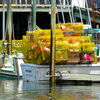Processing Your Payment
Please do not leave this page until complete. This can take a few moments.
- News
-
Editions
-
- Lists
-
Viewpoints
-
Our Events
-
Event Info
- Women's Leadership Forum 2025
- On the Road with Mainebiz in Bethel
- Health Care Forum 2025
- On The Road with Mainebiz in Greenville
- On The Road with Mainebiz in Waterville
- Small Business Forum 2025
- Outstanding Women in Business Reception 2025
- On The Road with Mainebiz in Bath
- 60 Ideas in 60 Minutes Portland 2025
- 40 Under 40 Awards Reception 2025
- On The Road with Mainebiz in Lewiston / Auburn
- 60 Ideas in 60 Minutes Bangor 2025
Award Honorees
- 2025 Business Leaders of the Year
- 2024 Women to Watch Honorees
- 2024 Business Leaders of the Year
- 2023 NextUp: 40 Under 40 Honorees
- 2023 Women to Watch Honorees
- 2023 Business Leaders of the Year
- 2022 NextUp: 40 Under 40 Honorees
- 2022 Women to Watch Honorees
- 2022 Business Leaders of the Year
-
-
Calendar
-
Biz Marketplace
- News
-
Editions
View Digital Editions
Biweekly Issues
- April 21, 2025 Edition
- April 7, 2025
- March 24, 2025
- March 10, 2025
- Feb. 24, 2025
- Feb. 10, 2025
- + More
Special Editions
- Lists
- Viewpoints
-
Our Events
Event Info
- View all Events
- Women's Leadership Forum 2025
- On the Road with Mainebiz in Bethel
- Health Care Forum 2025
- On The Road with Mainebiz in Greenville
- On The Road with Mainebiz in Waterville
- + More
Award Honorees
- 2025 Business Leaders of the Year
- 2024 Women to Watch Honorees
- 2024 Business Leaders of the Year
- 2023 NextUp: 40 Under 40 Honorees
- 2023 Women to Watch Honorees
- 2023 Business Leaders of the Year
- + More
- 2022 NextUp: 40 Under 40 Honorees
- 2022 Women to Watch Honorees
- 2022 Business Leaders of the Year
- Nomination Forms
- Calendar
- Biz Marketplace
Lobstermen say modern data collection essential to support resource
 File photo / Laurie Schreiber
Data such as water temperature, salinity, wind and past weather patterns are helpful to compare year to year, said lobster fishermen.
File photo / Laurie Schreiber
Data such as water temperature, salinity, wind and past weather patterns are helpful to compare year to year, said lobster fishermen.
More than 30 lobstermen told fisheries observers that modern data collection technology is needed to monitor the lobster resource and habitat, along with trends that might be affecting both.
The fishermen, from Maine and New Hampshire, met last week at a workshop in Ellsworth with ocean data system managers from Gulf of Maine Lobster Foundation and Northeastern Regional Association of Coastal Ocean Observing Systems.
"There are many weather and oceanic factors that fishermen now can access at any time. Crucial data such as water temperature, salinity, wind and past weather patterns are helpful to compare year to year," said Jamien Hallowell, captain of FV Ella V. from South Bristol. “This information is very valuable to predicting the current lobster season outlook based on past data. The Maine lobster industry depends on funding for these programs."
The Gulf of Maine Lobster Foundation is a nonprofit in Kennebunk that was founded in 2000 in response to a growing demand for improved lobster science and the need to establish long-term data sets.
The Northeastern Regional Association of Coastal Ocean Observing Systems is a nonprofit headquartered in Portsmouth, N.H., that generates data about the ocean and consolidates and share it.
During the workshop, lobstermen said they need timely and accurate data on ocean conditions so that the Gulf of Maine's lobster fishery remains a productive and profitable seafood industry.
Changing conditions
Data on weather and sea state helps fishermen make fundamental operational and safety decisions, they said.
It was also important to collect information on zooplankton and phytoplankton — tiny organisms that are eaten by lobster larvae — to predict future production. Information on the shifting influences of the Labrador Current and Gulf Stream help shape an understanding of temperature, salinity, nutrients and other conditions throughout the water bodies, they said.
Sponsored by the Sea Grant American Lobster Initiative, the workshop aimed to hear fishermen's data priorities for modernizing monitoring, modeling and data delivery systems to most effectively serve the fishery.
Data collection programs includes technology such as sensors mounted on fishing gear that automatically send data to a computer in the wheelhouse and plot it, and also relays the position along with averaged temperature and depths via the satellite. An ocean observing system includes the use of electronic tag technology to study animal movement and is considered a critical tool for the biological monitoring of marine life. Underwater gliders mounted with sensors can monitor factors such as water currents, temperature and storm effects.
Data collection programs have expanded in the region over the years. But there are still areas in the Gulf of Maine that need more sampling in order to keep up with changing environmental conditions, said Erin Pelletier, executive director of the Gulf of Maine Lobster Foundation.










0 Comments